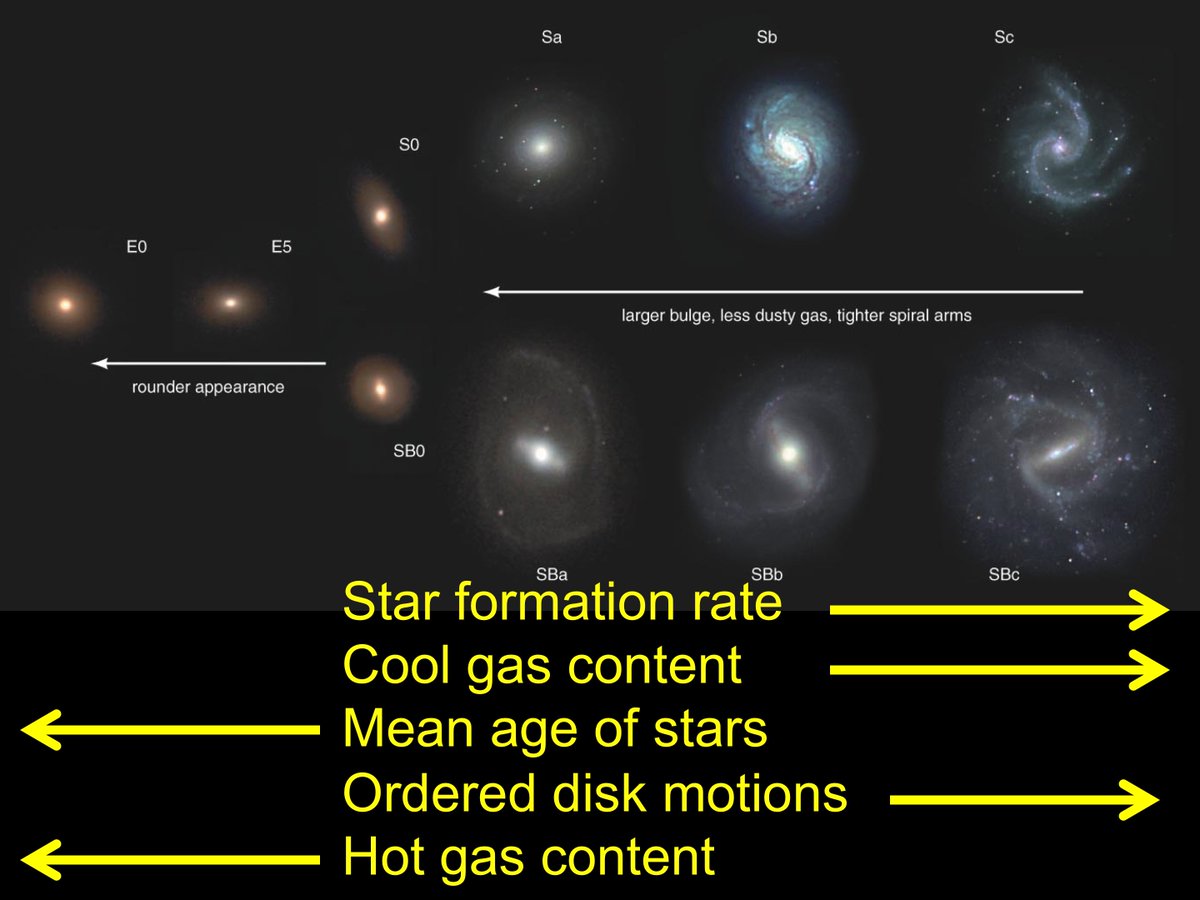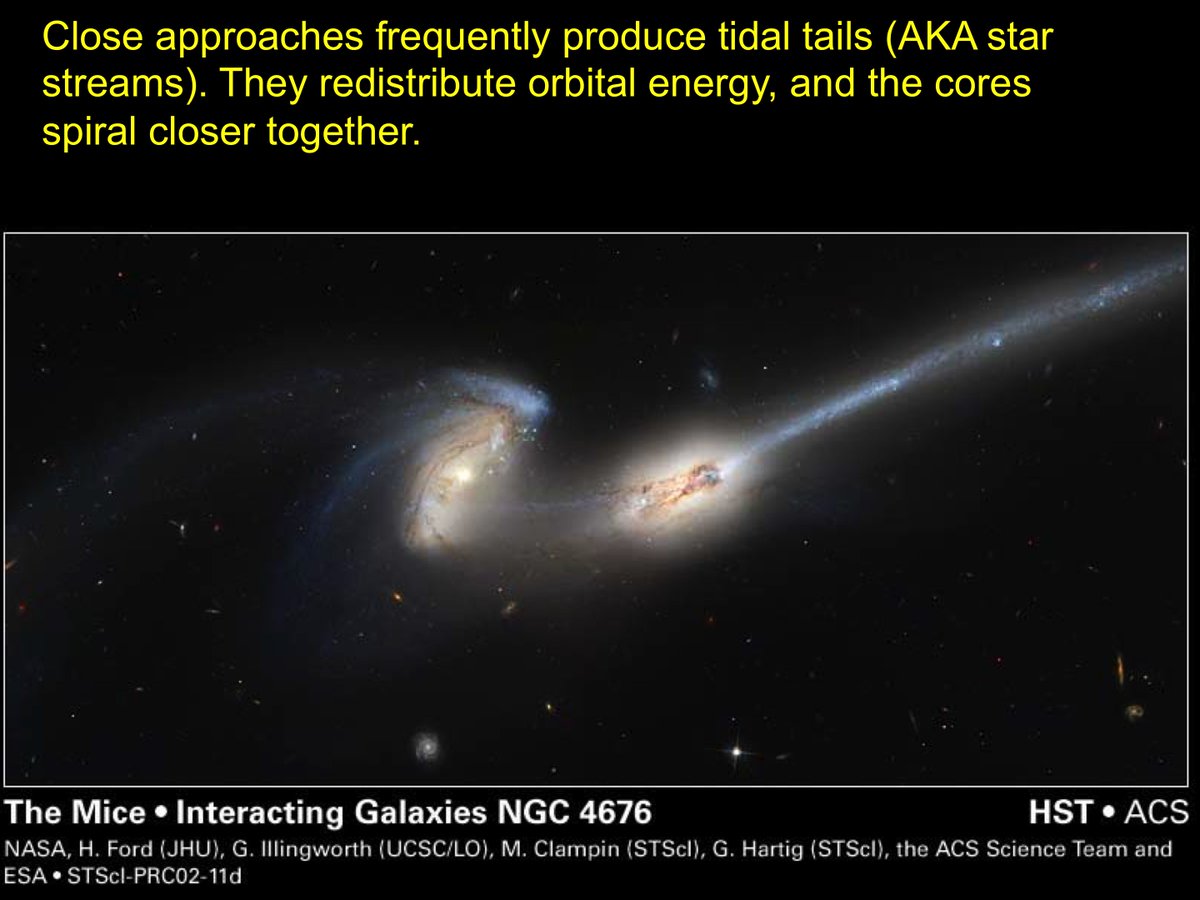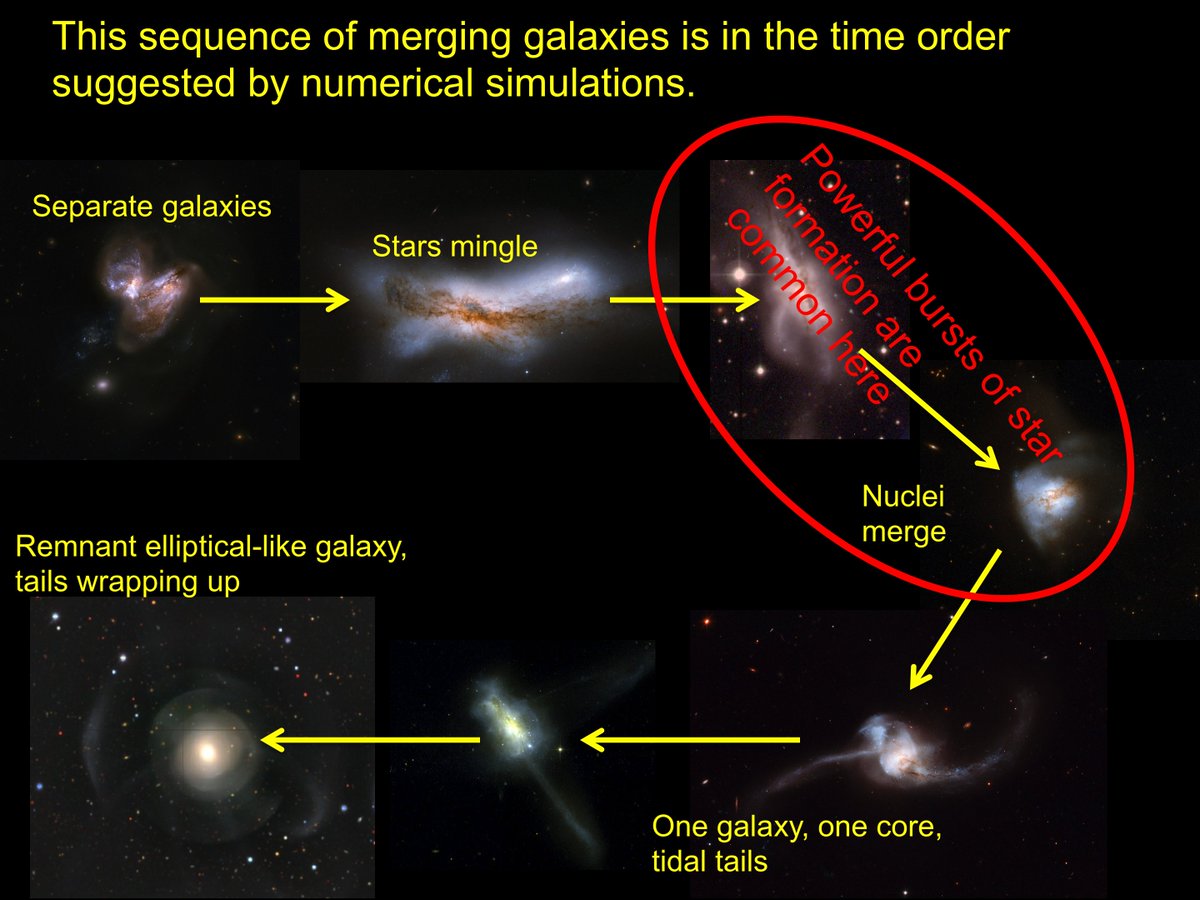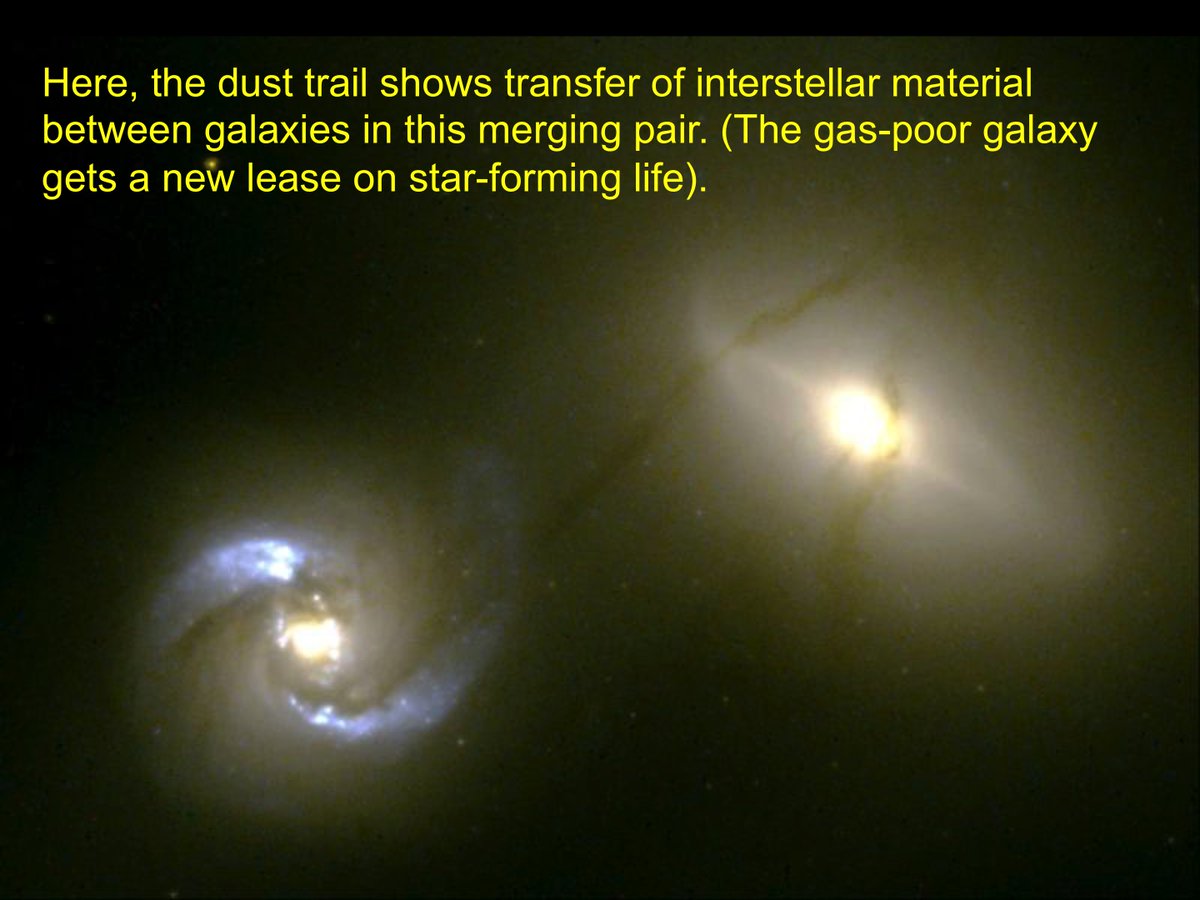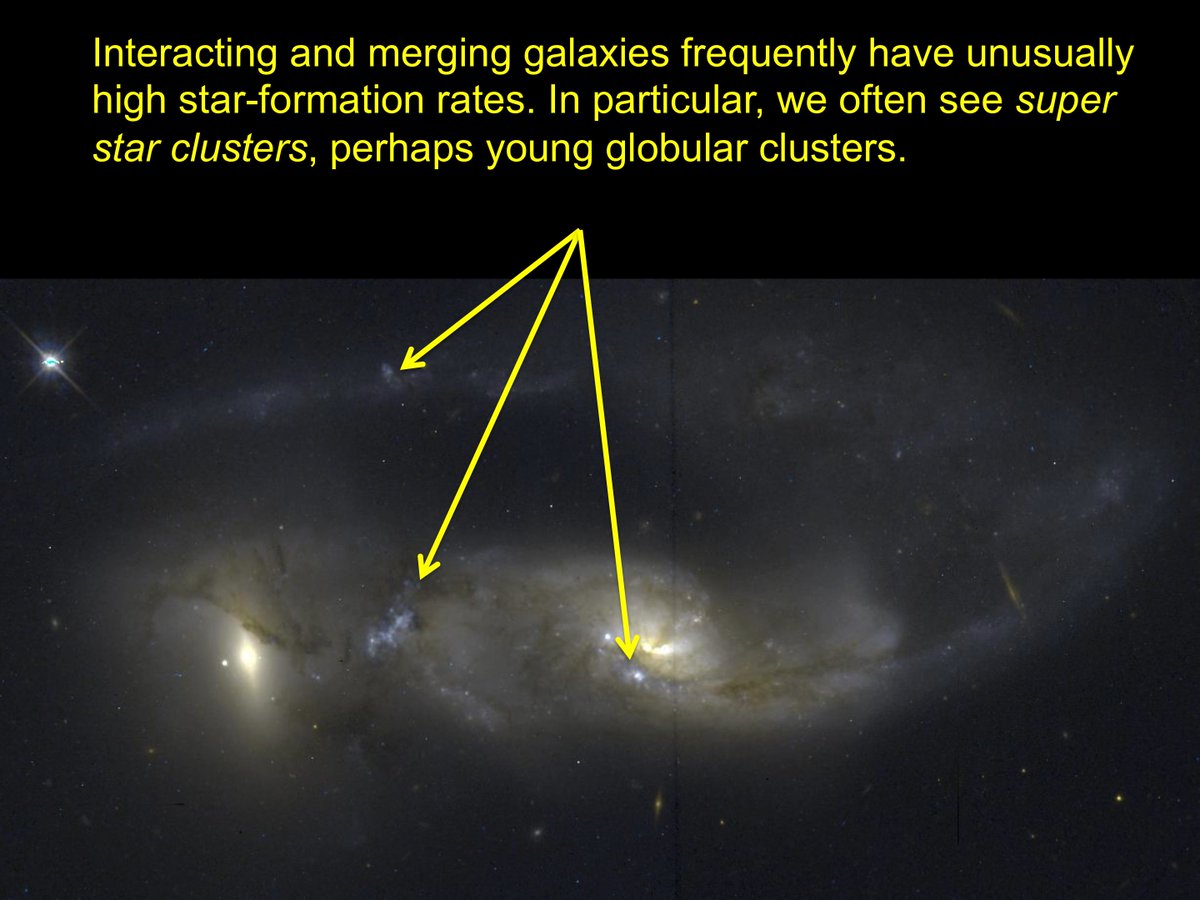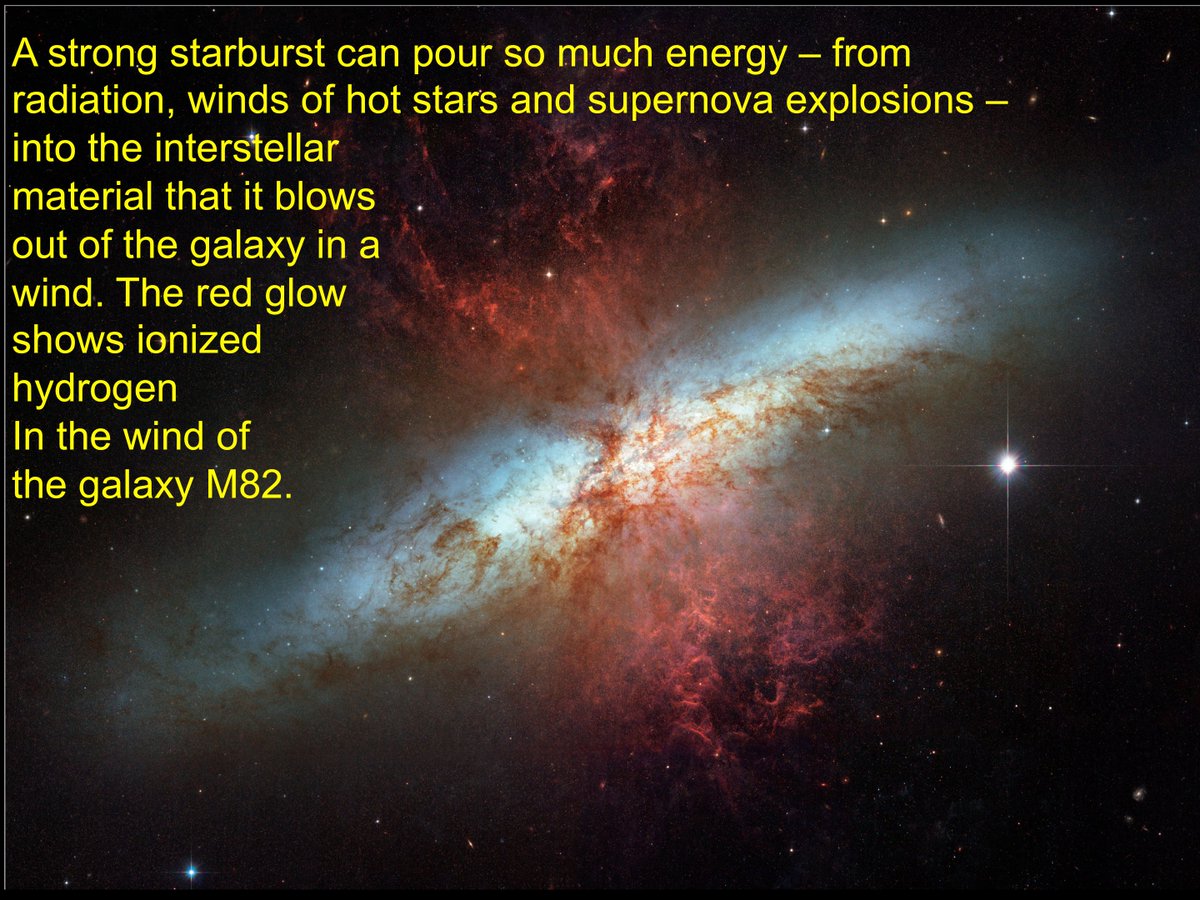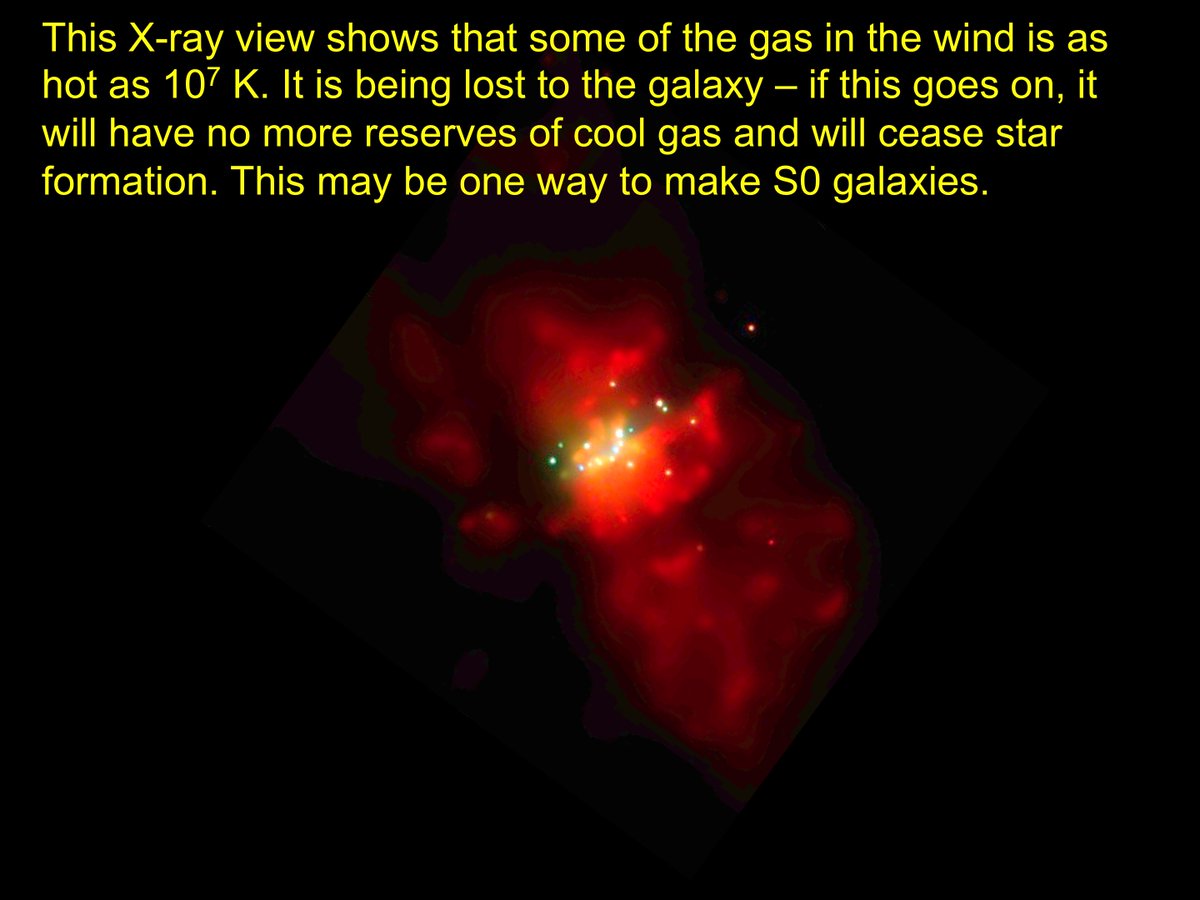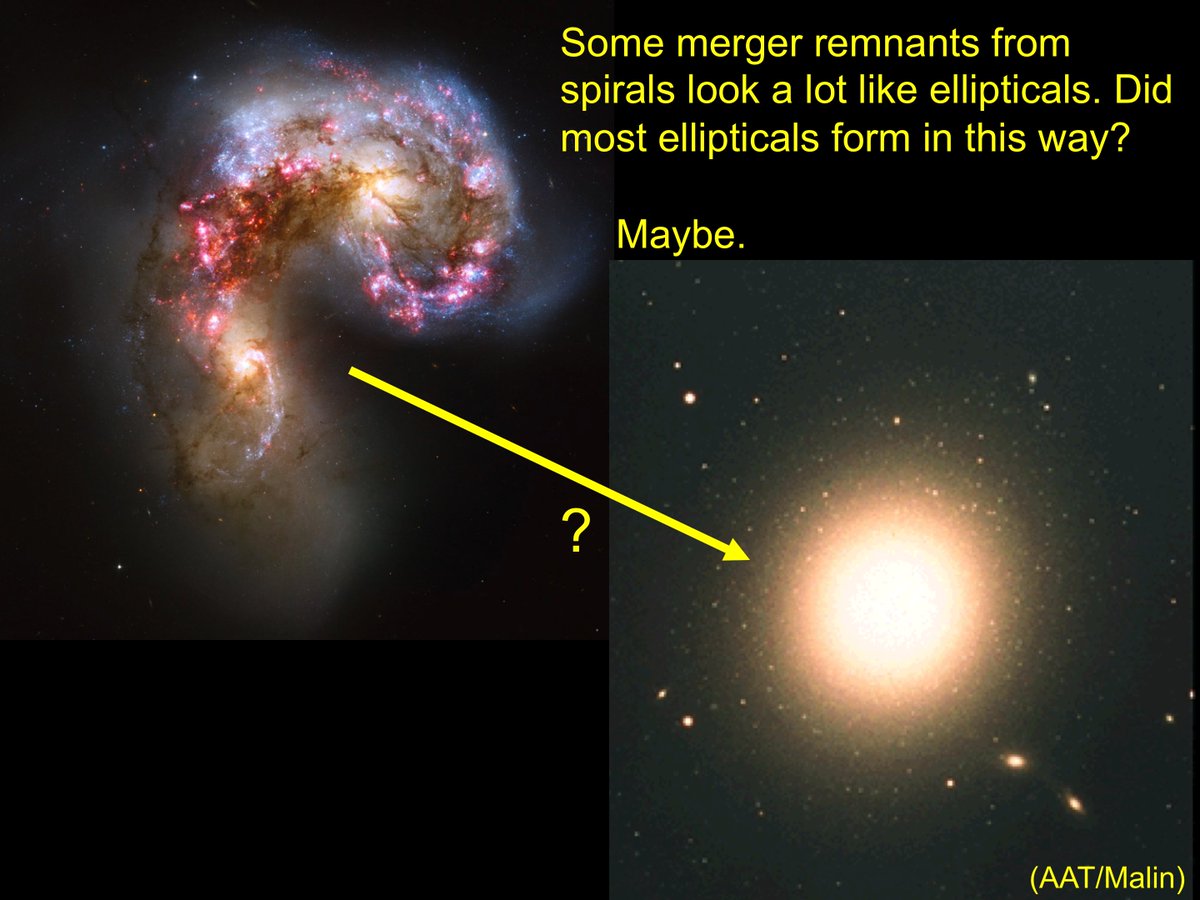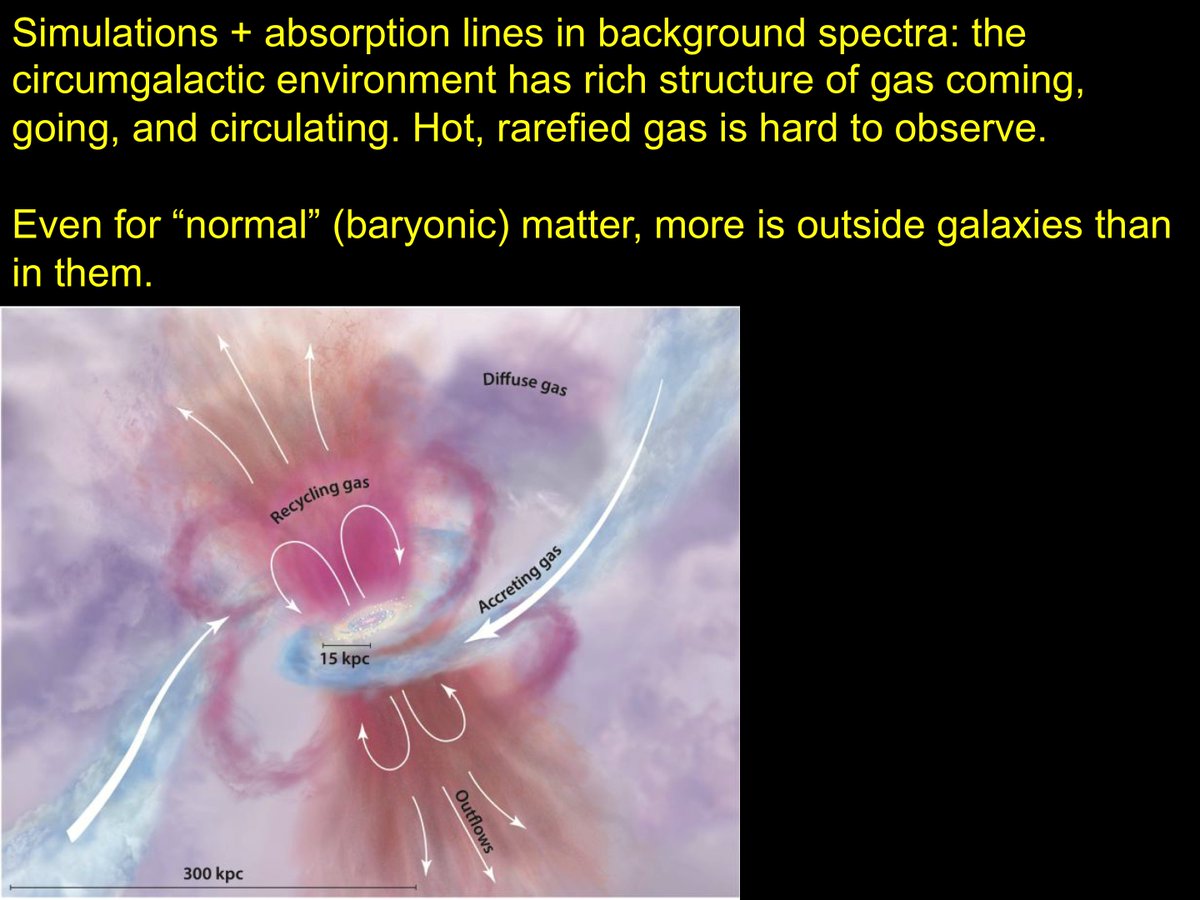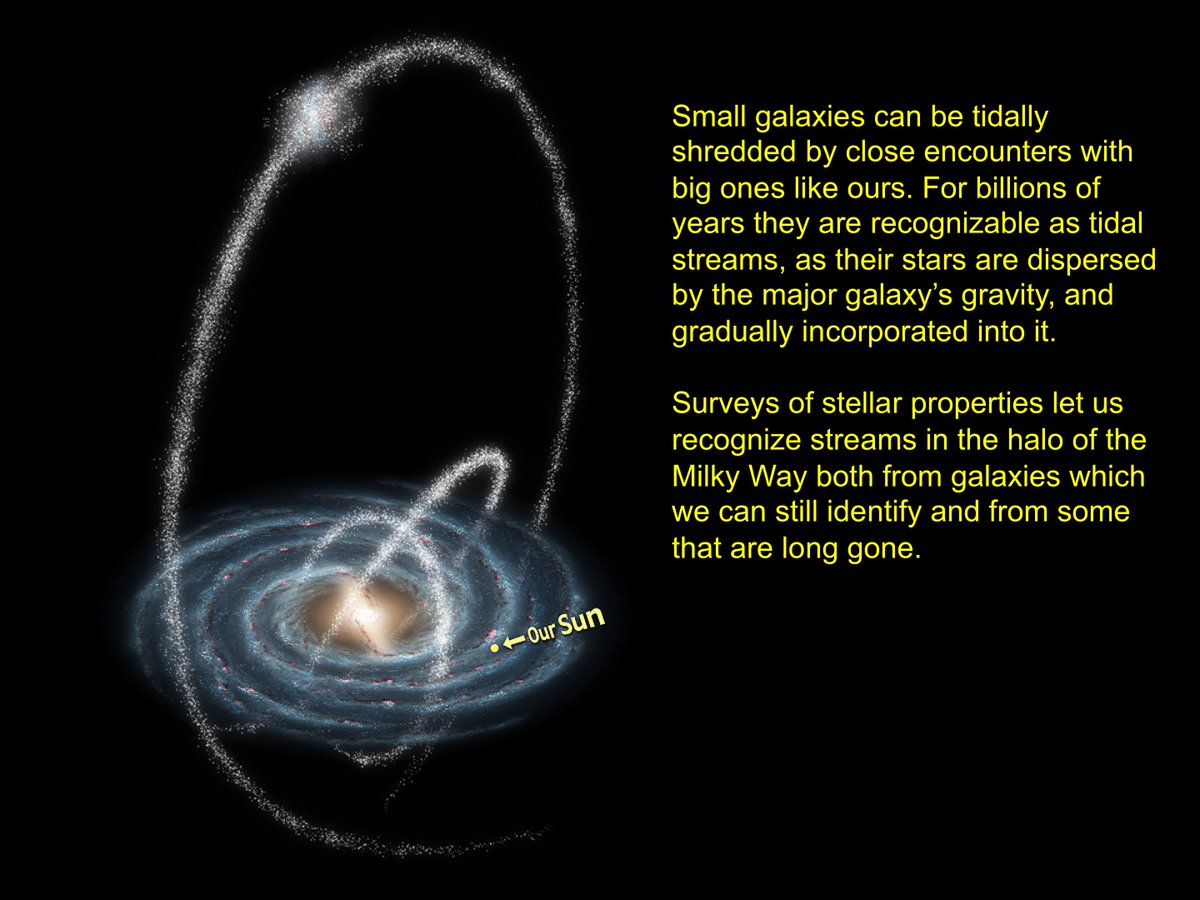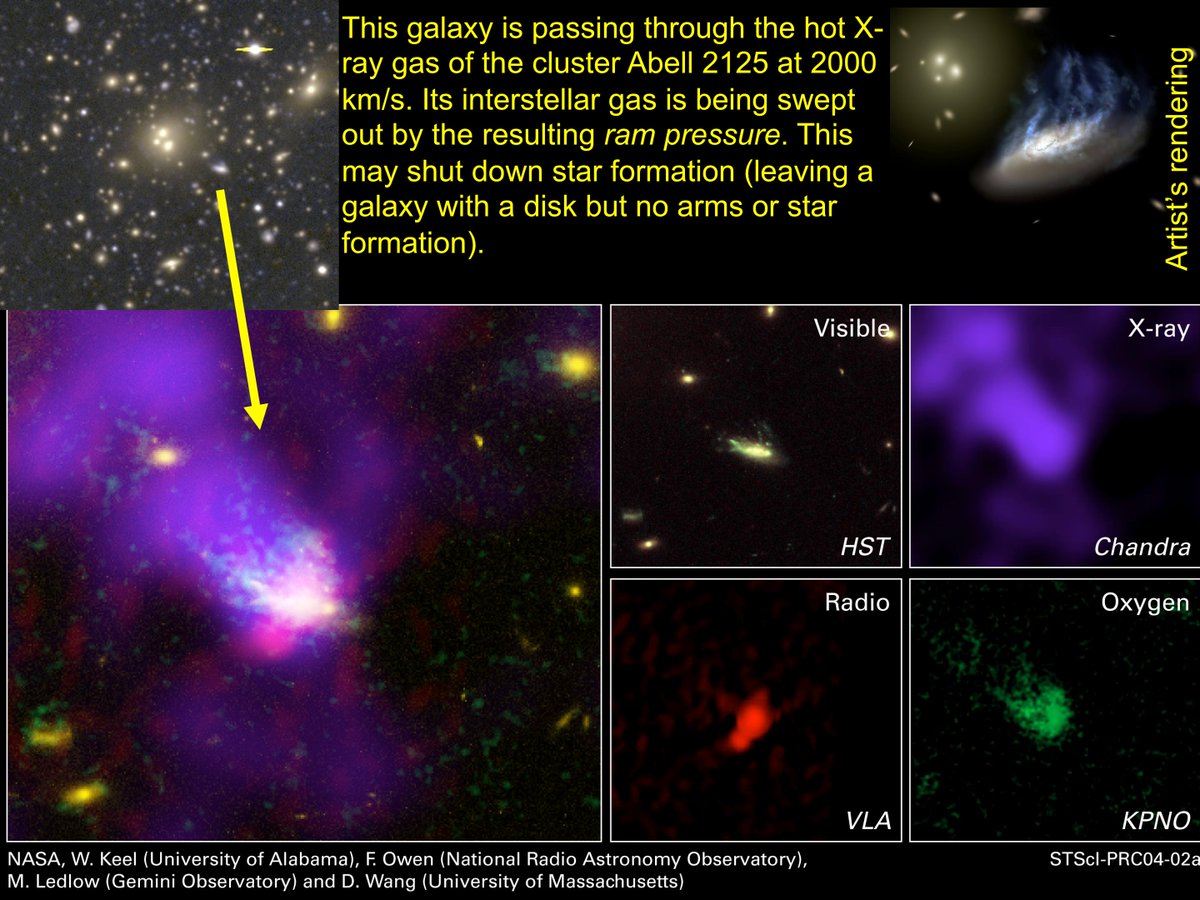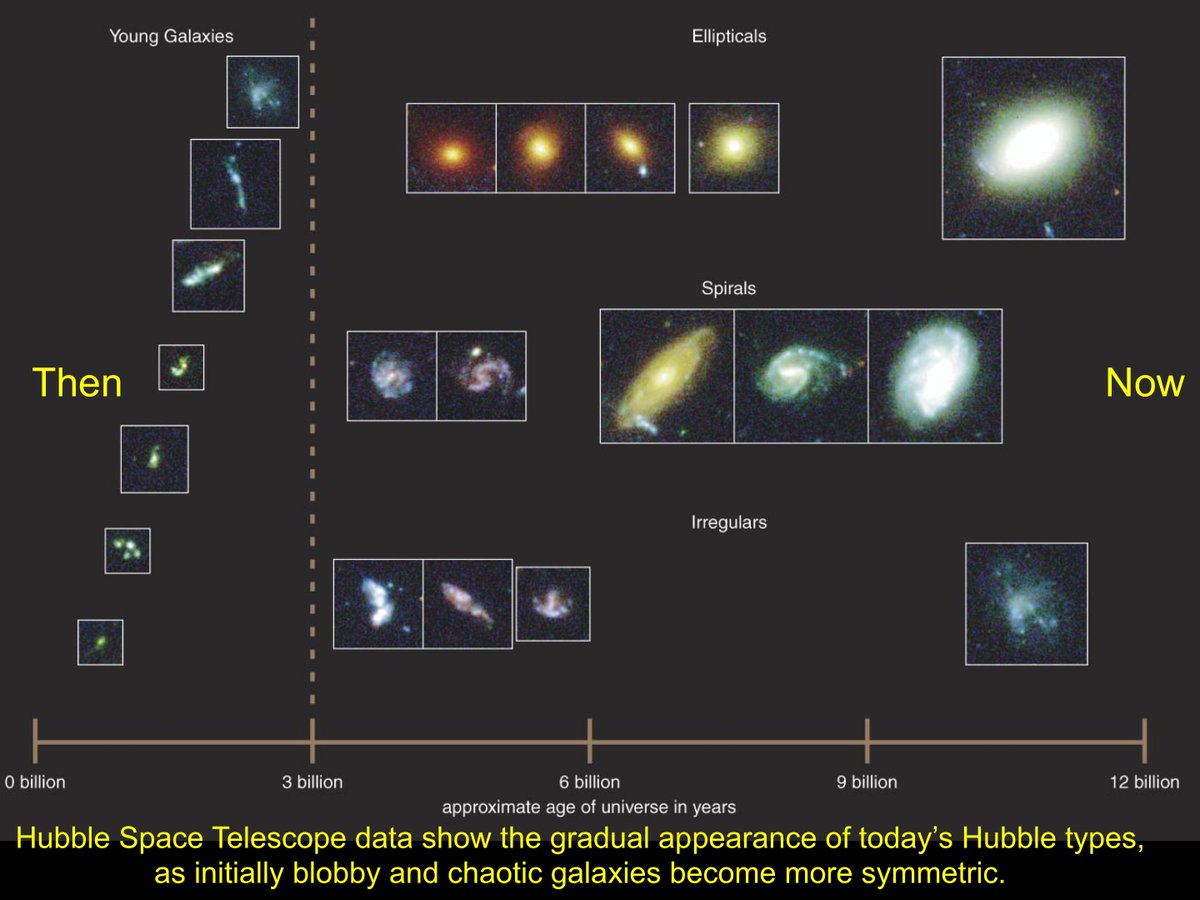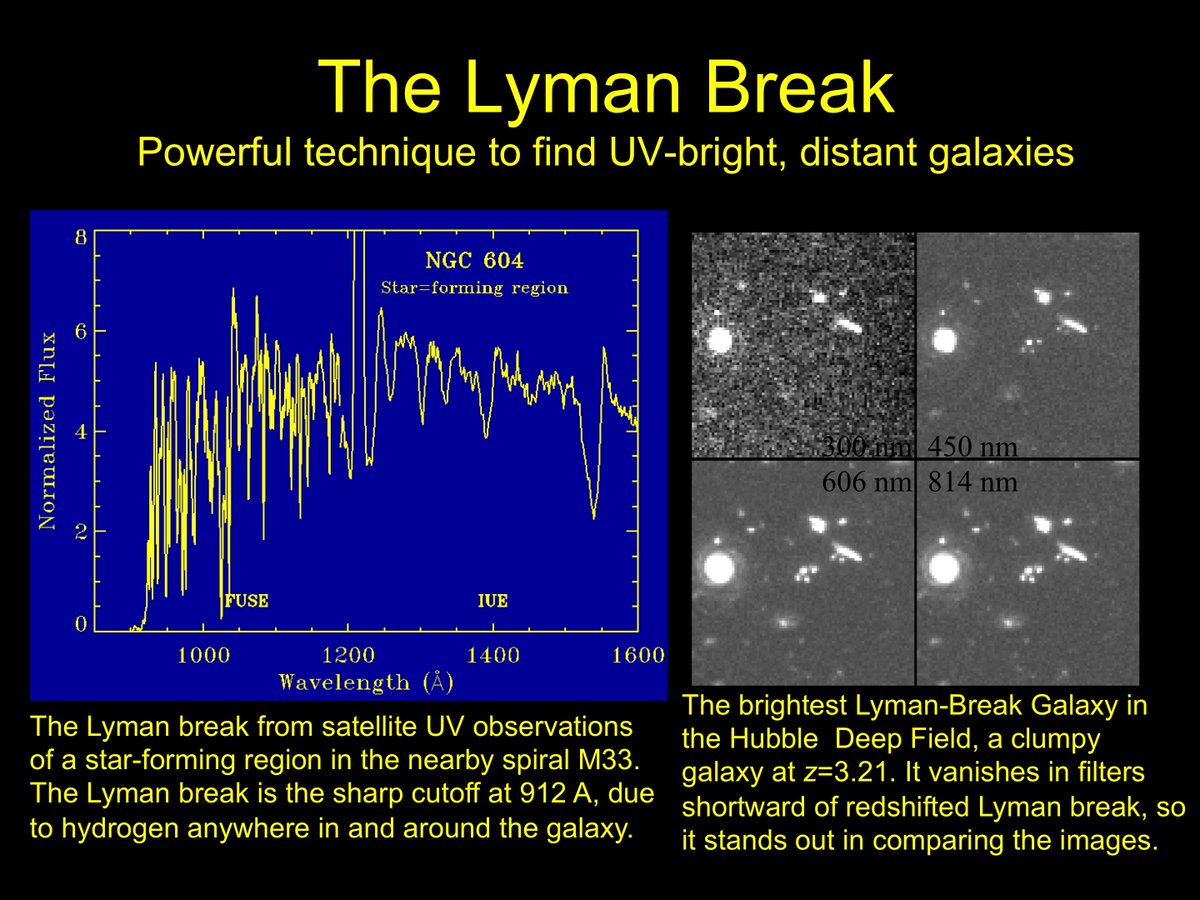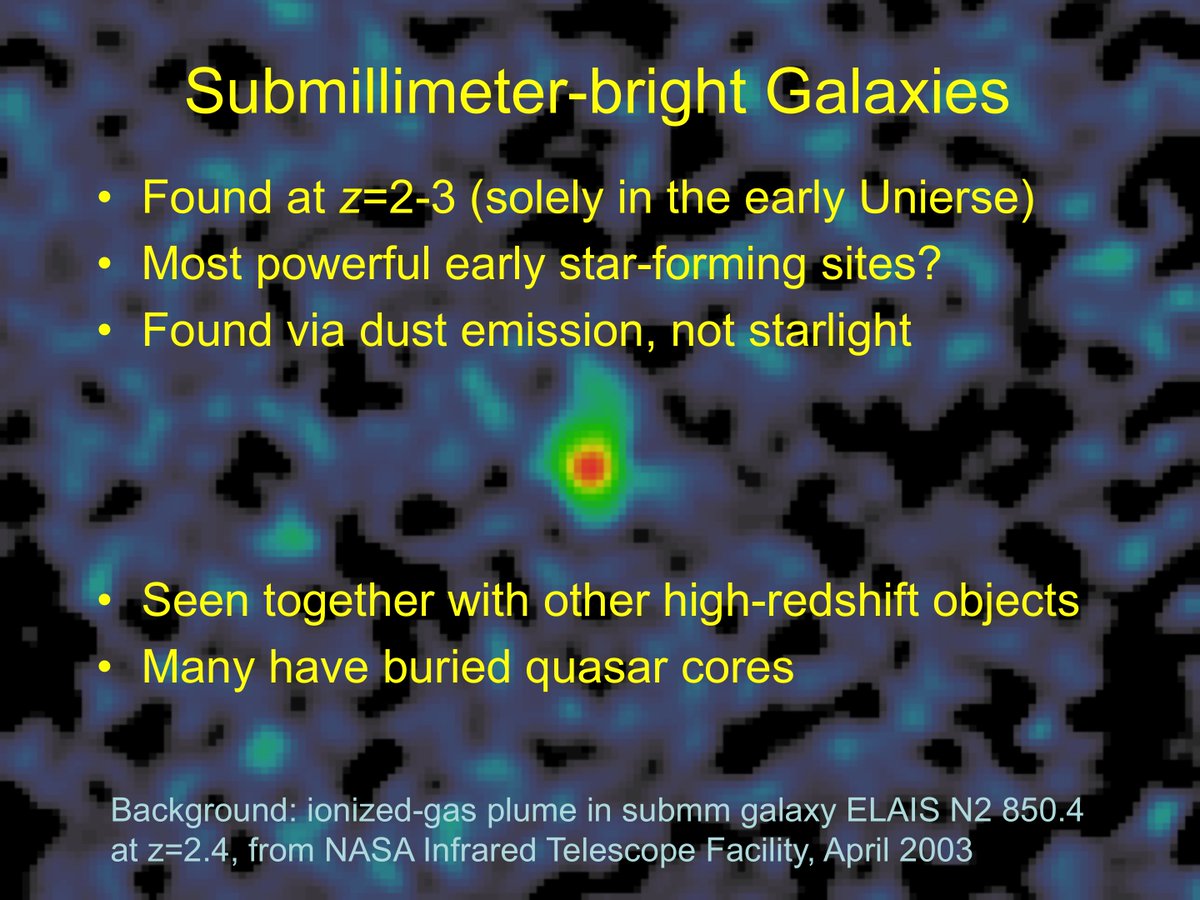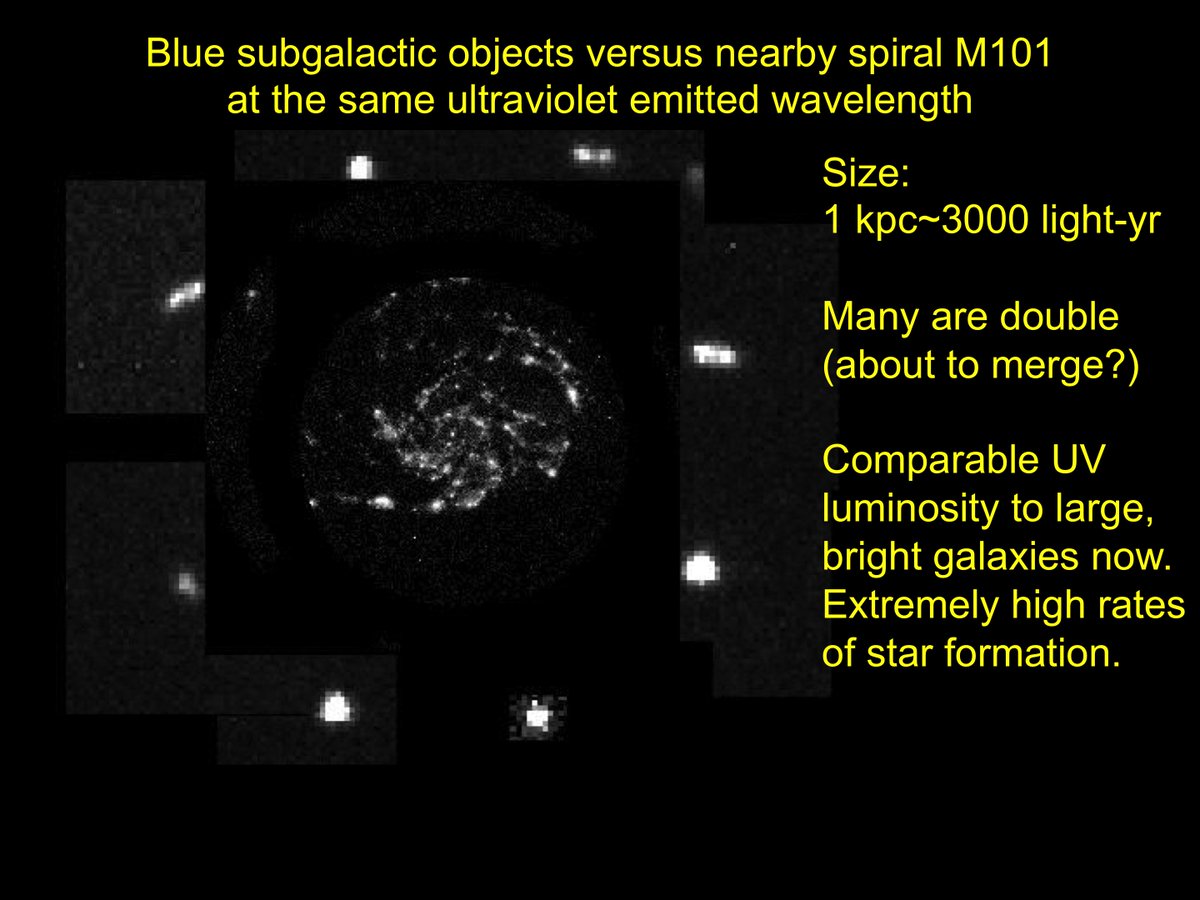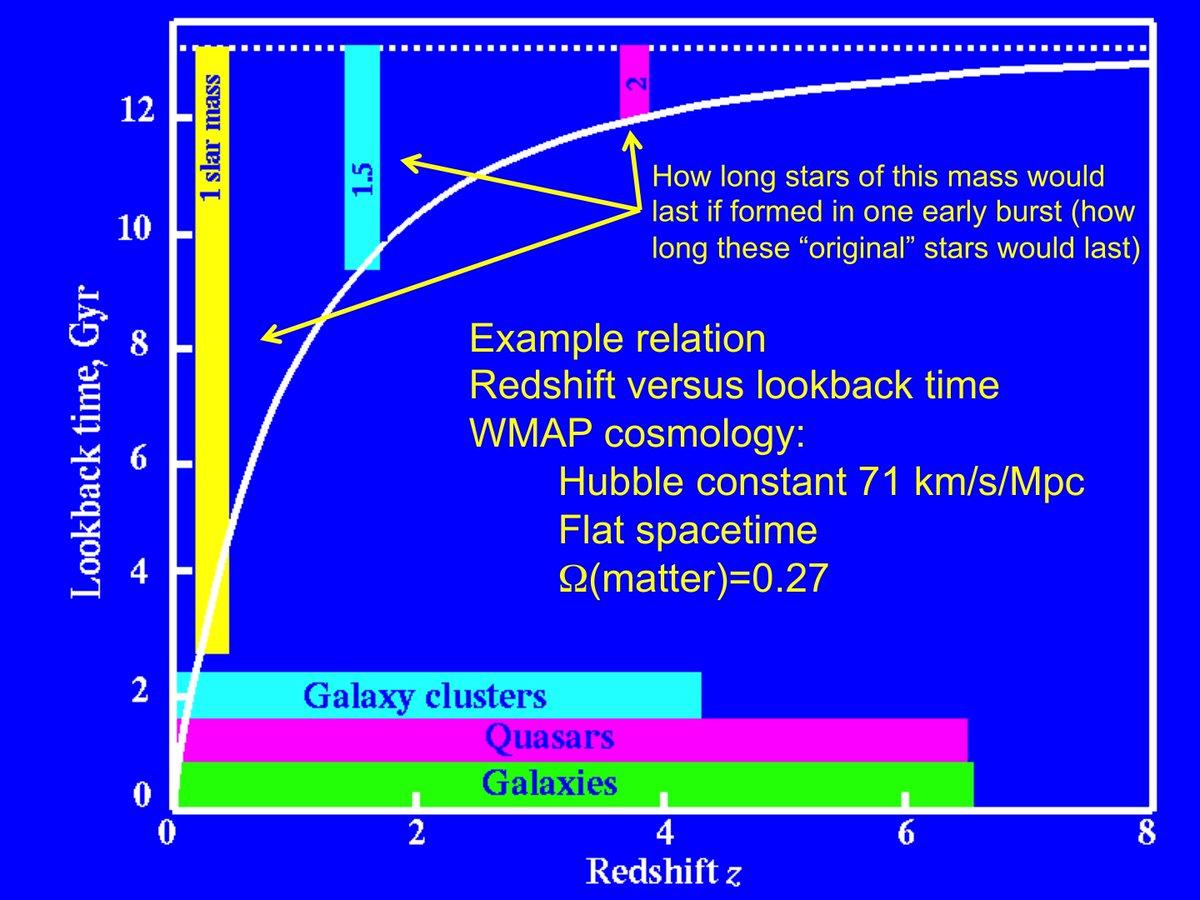Today in #BeyondSolSys class material - galaxy history. (Astronomers often speak of galaxy evolution - but as population change rather than descent w/modification, biologists and @GrumpyKelson complain). Anyway, galaxies show patterns today. Why?
Interplay among star formation, stellar evolution, enrichment of heavy elements during that, infall of pristine and enriched gas, winds, mergers and less dramatic acquisitions of smaller galaxies, all shape how galaxies develop. Observing these processes helps. #BeyondSolSys
Galaxy mergers are an obvious agent of perestroika. 2->1 in galaxy numbers, remnant is larger/brighter. Mergers w/cold gas often trigger bursts of star formation, and may end up looking like elliptical galaxies. Tidal tails are thrown out as cores spiral together. #BeyondSolSys
These mergers are shown in the order indicated by simulations. Strongest starbursts are concentrated around merger of galaxy cores. Supermassive black holes often accrete rapidly at this phase; when they finally merge, we expect bursts of gravitational radiation. #BeyondSolSys
Even more distant encounters between galaxies can transfer material between them (as traced by the dust lane in NGC 1409/10 here). Also, these encounters affect star formation within the galaxies... #BeyondSolSys
so we see super star clusters, much brighter and more massive than all but a handful in our whole Local Group. They might be young globular clusters.
Bursts of star formation caused by interactions or mergers can have lasting impact. #BeyondSolSys
Bursts of star formation caused by interactions or mergers can have lasting impact. #BeyondSolSys
Along with redistributing the stars, accompanying starbursts can further transform, the remnant galaxy. Energy input from massive stars + supernovae can blow away cold gas needed for star formation, shutting it down. M82 is the nearest case; X-rays show gas >10^7 K. #BeyondSolSys
Combination of gas sweeping by galactic winds and redistribution of stellar orbits led Alar Toomre in 1977 to propose "merger hypothesis" - are most or all elliptical galaxies the outcome of merging spirals?
Sometimes. Maybe often. #BeyondSolSys
Sometimes. Maybe often. #BeyondSolSys
We see ellipticals early in cosmic time, not allowing much time for earlier spirals to form and merge (more like monolithic collapse, rare as that is in simulations). Realistically, collapse of a clumpy initial state isn& #39;t quite monolithic anyway. #BeyondSolSys
Galaxies are not as isolated as we tend to think - they& #39;re embedded not just in tenuous intergalactic medium, but circumgalactic gas w/complex circulation. Just beginning to observe/understand its effects. (Visualization from review by Tumlinson & @astronomolly) #BeyondSolSys
(As I once sad to NASA officials during a senior review, about telescopes in space that could see this gas via quasar absorption lines - most of the baryons, probably most of the metals.)
Galaxies can also grow through interactions which are less dramatic (at least for the bigger one). Small galaxies can be incorporated into larger ones, with tides pulling them into long loops or streams of stars. Milky Way has done this. #BeyondSolSys
The galaxy environment giveth, and sometimes taketh away. A galaxy passing through the hot gas in a cluster experiences a hot wind, and the resulting ram pressure can compress, then remove (some of) its gas. Another way to shut down star formation. (Cough, S0s) #BeyondSolSys
Huge tech advances during my career let us see some aspects of galaxy population over cosmic time (star-forming galaxies w/o too much dust). Everyone looking at early @NASAHubble images of distant Universe: "those galaxies look weird") #BeyondSolSys
There are clear biases (umm, selection effects) in this simple comparison. At high z, Hubble shows us what started as UV light, dominated by star-forming regions. Important that there are multiple ways to pick out high-z galaxies from all the dim foreground ones. #BeyondSolSys
A powerful technique (albeit also useful only for dust-poor star-forming galaxies) is the Lyman break. Very small amounts of neutral hydrogen gas absorb light at and below ionization edge at 912 A/13.6 eV. This shows up even in images with broad filters. #BeyondSolSys
Dusty star-forming galaxies in early Universe have their IR emission from dust shifted to submm range; galaxies detected there are overwhelmingly powerful distant ones. ("No, @astrocaits is the real expert") #BeyondSolSys
A population found almost solely in the early Universe: star-forming "subgalactic" objects, only a few thousand LY in size but forming more stars than our whole galaxy is today. Comparison: at same UV band, big spiral M101 versus a set of these. #BeyondSolSys
Why stress star-forming properties? Among other things, early galaxies show us closer to original conditions.This graph (following layout from Don Hamilton& #39;s 1983 dissertation) shows how long initial stars of various masses survive mapped to redshift+lookback time. #BeyondSolSys
Unravelling galaxy history is clearly unfinished business - we need new kinds of data and better understanding. JWST, ALMA, new giant radio facilities, and more, plus brains guiding simulations, offer promise.
Next up for Friday: active galactic nuclei!
#BeyondSolSys
Next up for Friday: active galactic nuclei!
#BeyondSolSys

 Read on Twitter
Read on Twitter